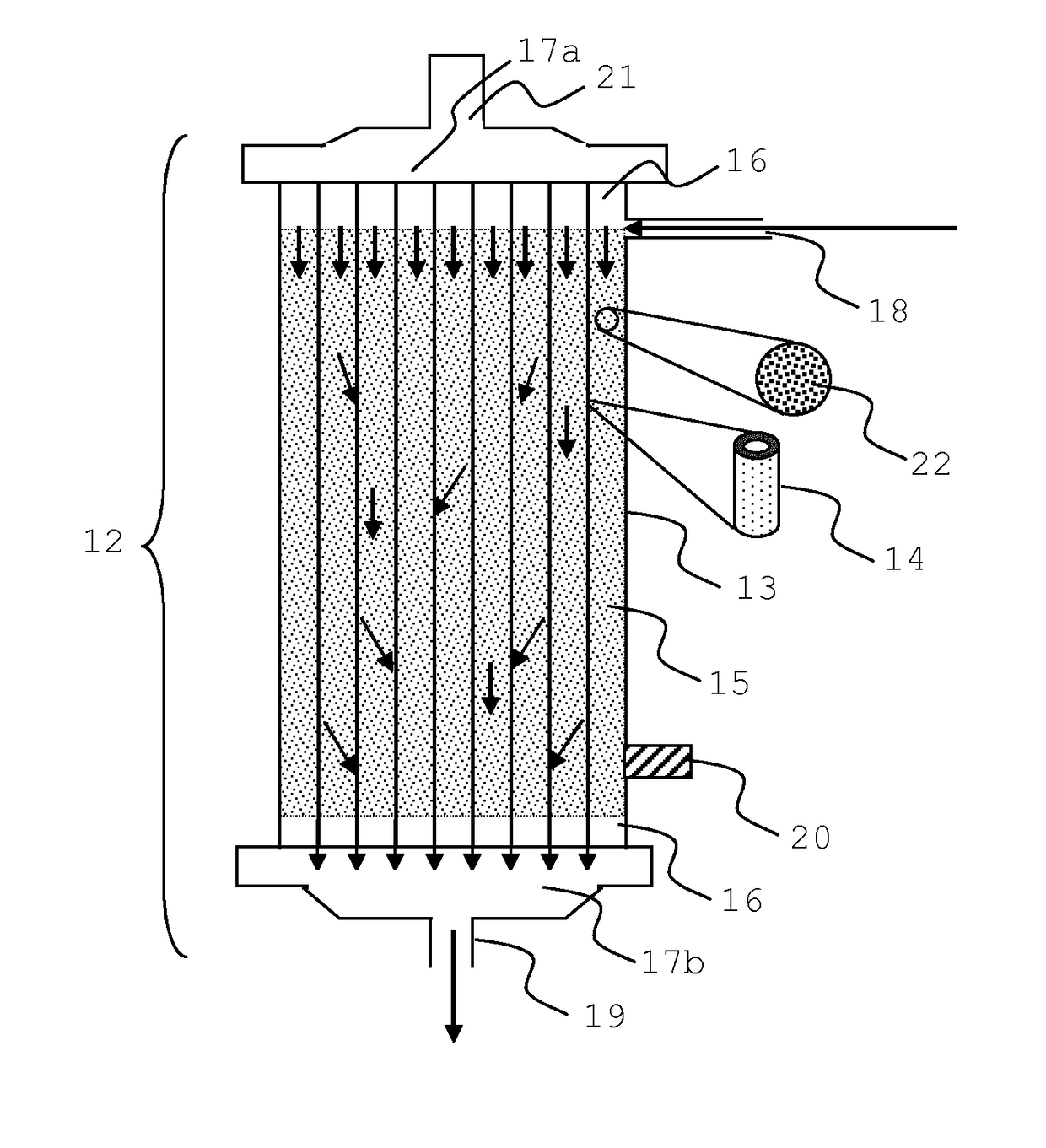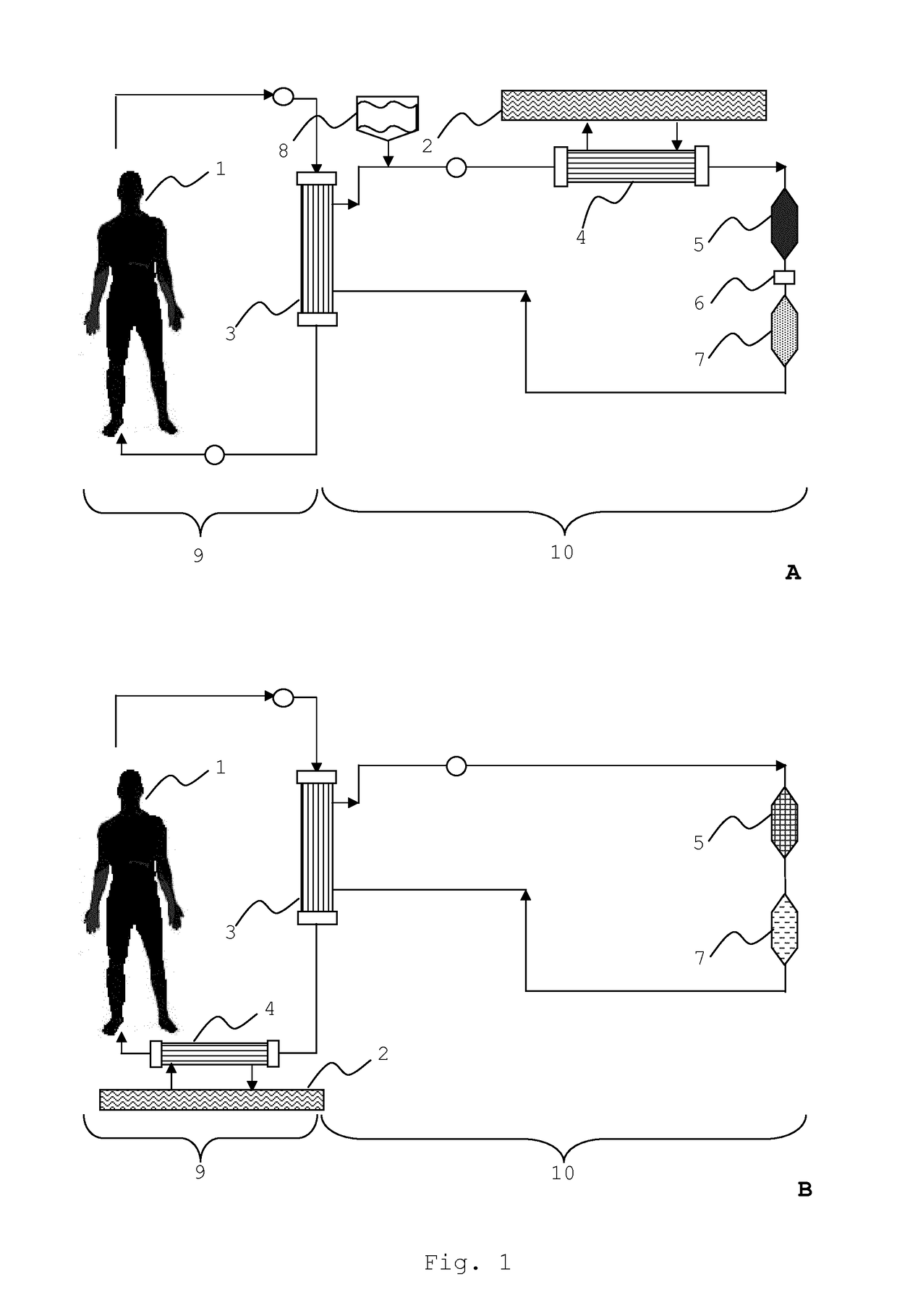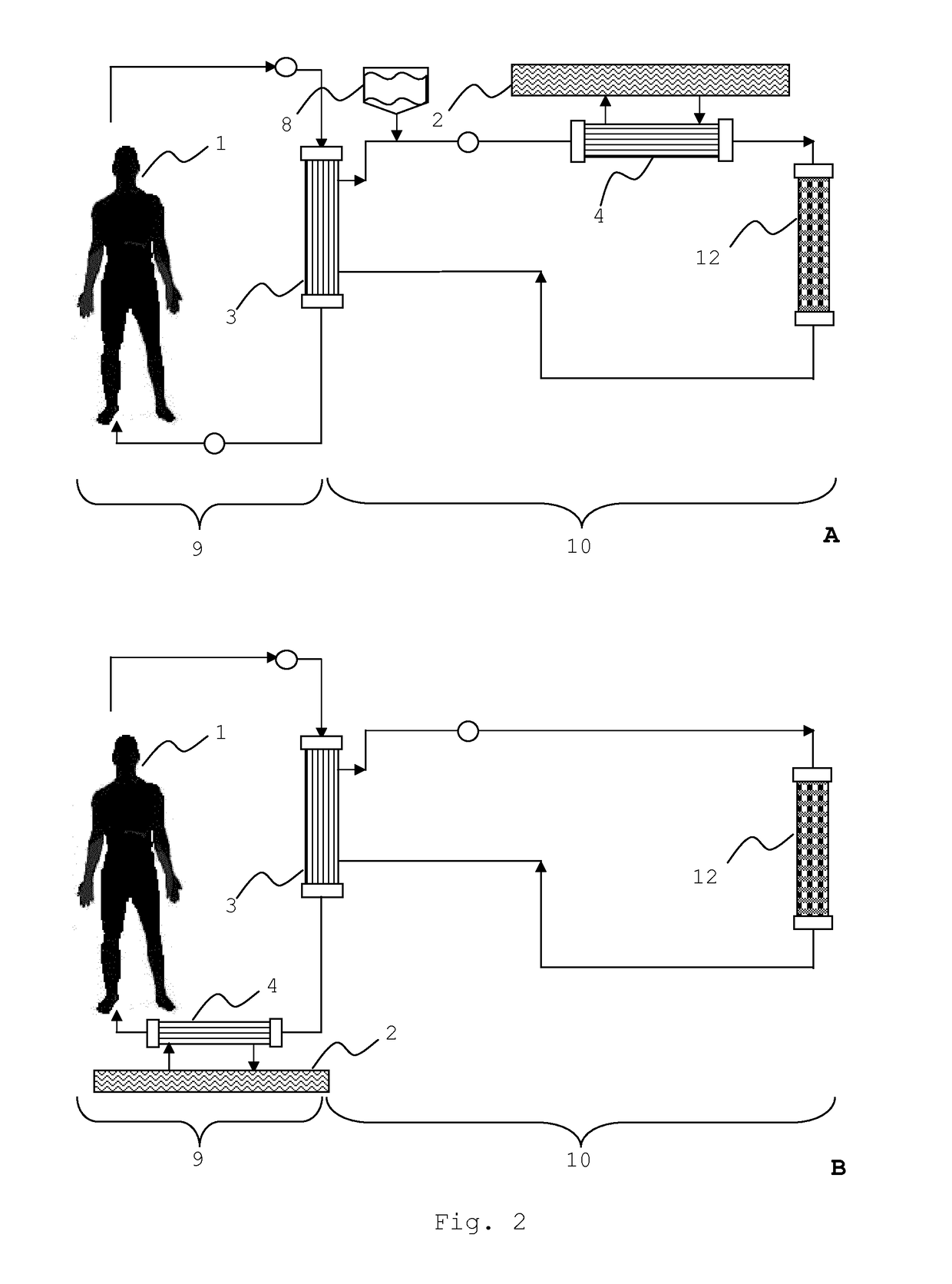Integrated device for liver support system
a technology of liver support and liver, applied in the field of extracorporeal system for liver dialysis, can solve the problems of accumulating toxins not cleared by the failing liver, comparatively complex handling, and high cost of parts
- Summary
- Abstract
- Description
- Claims
- Application Information
AI Technical Summary
Benefits of technology
Problems solved by technology
Method used
Image
Examples
example 1
Preparation of a Doped Hollow Fiber Membrane
1.1 Grinding of Ion Exchange Resin
[0071]Grinding was performed with a LabStar LS1 grinding mill of Netzsch. Dowex 1×2 anion exchanger was grinded in the presence of water and NMP as an organic solvent. Table I summarizes the settings for the grinding procedure.
[0072]
TABLE IIon exchange materialDowex ® 1x2-Cl, 1000 gSolventWater / NMP (247.1 g / 1300 g)Agitator speed3000 l / minThroughput74 kg / hEnergy input3.99 kWhGrinding materialZirconium oxideFiller Loading90%Treatment time120 minParticle diameter ond99 = 7.6 μmcumulative %
1.2 Preparation of the Spinning Solution
[0073]The particles were used for the preparation of a spinning solution for preparing a microporous doped membrane. The polymer composition was chosen to be a combination of hydrophobic polyethersulfone (PES) and a mixture of polyvinylpyrrolidone having high molecular weight (PVP K85) and low molecular weight (PVP K30). The spinning solution further comprised NMP as a solvent and wate...
example 2
Preparation of an Integrated Filter Module
2.1 Preparation of Hand Bundles and Filter Modules
[0077]Membrane bundles were prepared after the spinning process in order to prepare the fiber bundle for certain performance tests. The first process step is to cut the fiber bundles to a defined length of 23 cm. The next process step consisted of melting the ends of the fibers. An optical control ensures that all fibers were well melted. Then, the ends of the fiber bundle were transferred into a potting cap. The potting cap was fixed mechanically and a potting tube was put over the potting caps. Then the fibers were potted with polyurethane. After the polyurethane had hardened, the potted membrane bundle was cut to a defined length and stored dry before it is used for the different performance tests.
[0078]Fiber bundles within a housing were prepared in a similar manner. The manufacturing of the modules comprises the following specific steps. First, the number of fibers required is calculated...
example 3
Comparison of the Integrated Filter Module with the Adsorber Units of the MARS® System
[0081]The integrated filter module according to the invention (see Examples 1 and 2) was compared with the adsorber cartridges as used in the MARS® system in a re-circulating test setup (FIG. 7). The first system (FIG. 7A) comprised the standard adsorber cartridges as they are used in the MARS® system. The first cartridge (40) contained activated carbon (Norit® ROX, an acid washed extruded carbon) and the second cartridge (41) contained anion exchange material (Dowex® 1×2). The second test system (FIG. 7B) comprised the integrated filter module (49). The test was based on determining the reduction of certain marker substances by perfusing a solution containing said markers through the cartridges and the integrated filter module, respectively. The marker substances chosen were (a) unconjugated bilirubin from Sigma (UCB, 150 mg dissolved in 15 ml 0.1 M NaOH), (b) chenodeoxycholic acid from Sigma (CDC...
PUM
| Property | Measurement | Unit |
|---|---|---|
| diameter | aaaaa | aaaaa |
| diameter | aaaaa | aaaaa |
| diameter | aaaaa | aaaaa |
Abstract
Description
Claims
Application Information
 Login to View More
Login to View More - R&D
- Intellectual Property
- Life Sciences
- Materials
- Tech Scout
- Unparalleled Data Quality
- Higher Quality Content
- 60% Fewer Hallucinations
Browse by: Latest US Patents, China's latest patents, Technical Efficacy Thesaurus, Application Domain, Technology Topic, Popular Technical Reports.
© 2025 PatSnap. All rights reserved.Legal|Privacy policy|Modern Slavery Act Transparency Statement|Sitemap|About US| Contact US: help@patsnap.com



